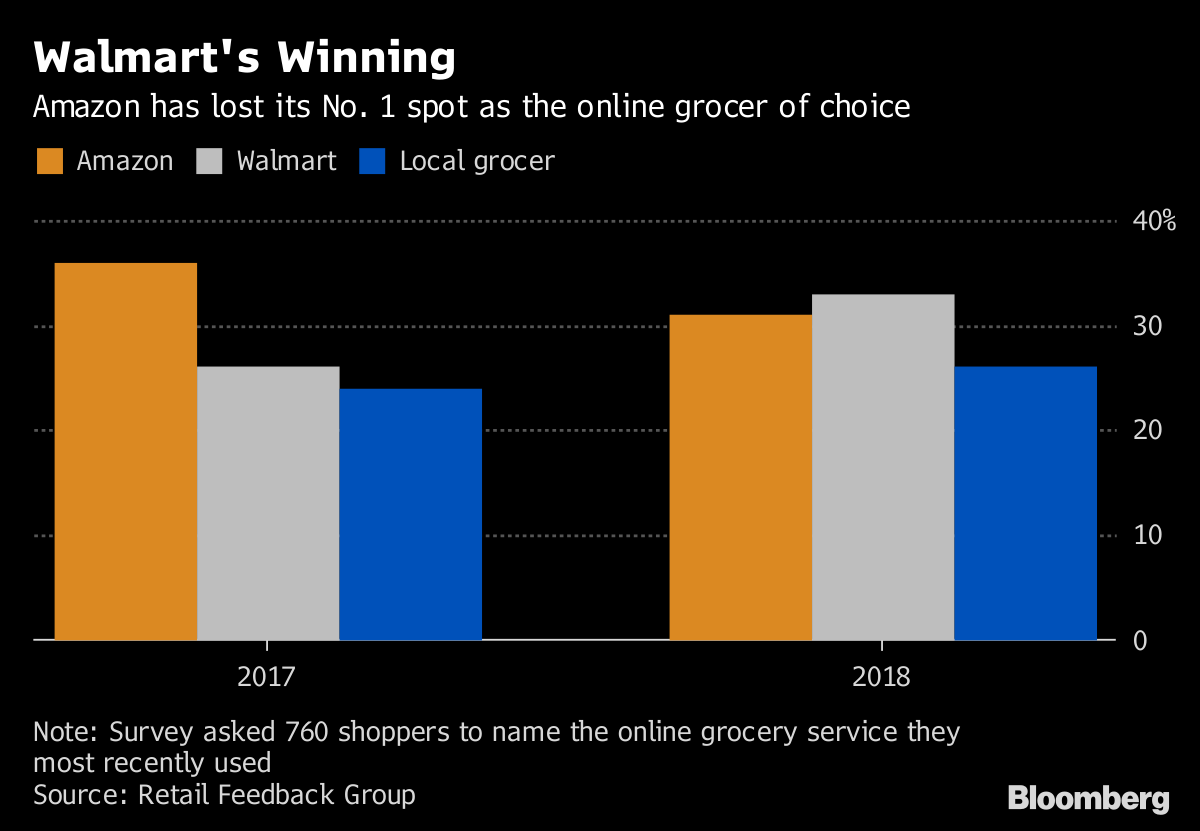Nov 6, 2018
Walmart becomes online shoppers' most popular grocer, beating Amazon
, Bloomberg News

Look out, Amazon: Walmart is coming to steal your lunch -- and maybe dinner too.
The world’s largest retailer has surpassed the e-commerce giant in a survey of online food shoppers, more of whom said they most recently visited Walmart’s site for groceries. Local supermarkets were in third place, fueled in part by logistics provider Instacart, which handles orders for grocers like Kroger Co. and many others.
Walmart has moved ahead thanks to the rapid deployment of its curbside grocery pickup service, which is now in about 2,000 stores. An additional 1,000 will come on board by the end of 2019, the company said at a recent investor conference. Walmart also works with delivery services like DoorDash Inc. and Deliv to bring groceries to customers’ homes for a fee. Amazon, meanwhile, offers grocery delivery from Whole Foods Market stores for its Prime customers in 60 cities, with in-store pickup now available in 10.
The survey, from researcher Retail Feedback Group, also found that online food shoppers are more willing to purchase perishable items like produce, meat and seafood, categories that many shoppers still prefer to select in a store in order to get the best quality. Those concerns have held back the adoption of online food shopping in the U.S., which trails Britain and South Korea.








